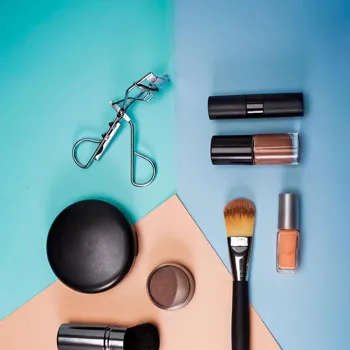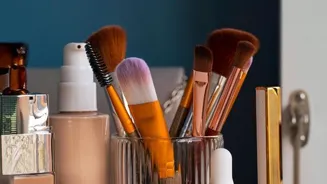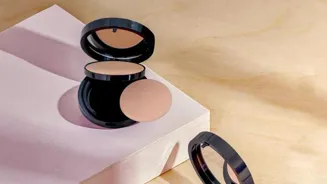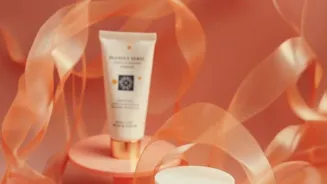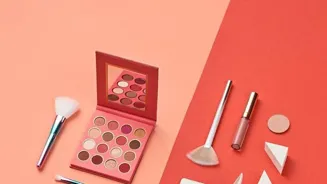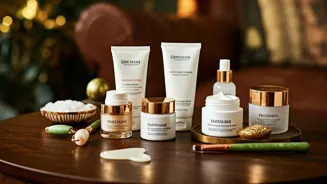Unlock the mystery of finding the perfect concealer! Dive into 7 essential tips for flawless coverage. Find your match!
Namaste, lovely readers! Ever struggled to find the perfect concealer? You're not
alone! Many of us desi beauties face this makeup dilemma. Concealer is a total game-changer, hiding dark circles, blemishes, and uneven skin tone.
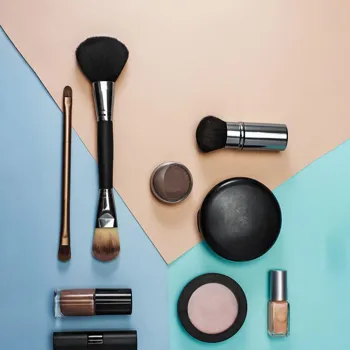
But picking the wrong shade can actually highlight those imperfections instead of concealing them. No stress! We're here to guide you through the maze of concealer shades and textures, so you can achieve that flawless, natural-looking coverage you've always dreamt of.
Get ready to say bye-bye to those pesky imperfections and hello to a bright, radiant complexion!
Choosing the right concealer is crucial for flawless makeup
So, why is finding the right concealer such a big deal, you ask? Well, imagine wearing a concealer that's way too light. Suddenly, your under-eye area looks ashy and ghostly. Or, if it's too dark, it can make your dark circles appear even more prominent!
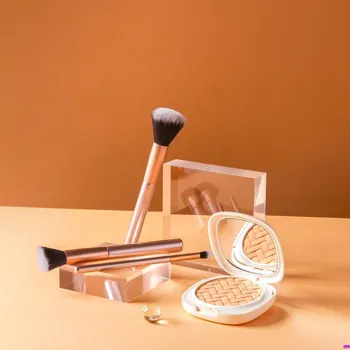
The perfect concealer should blend seamlessly into your skin, effectively neutralizing imperfections without being noticeable. It's all about creating a smooth, even canvas so your foundation and other makeup can work their magic.
Think of it as the secret weapon in your makeup arsenal, but choose wisely!
7 tips for choosing the right concealer for Indian skin tones
Let's dive into the 7 essential tips to help you choose the right concealer shade, keeping in mind our beautiful Indian skin tones, which can range from fair to deep with warm, cool, and olive undertones. Remember, patience and a little bit of experimentation are key.
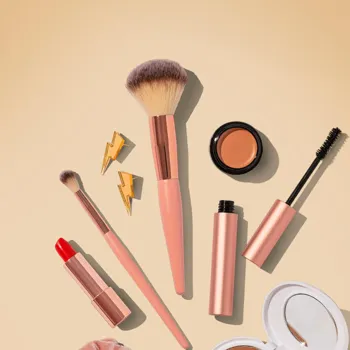
Don't be afraid to try different shades and brands until you find your perfect match. This journey to flawless coverage is all about celebrating your natural beauty and enhancing your features. So, grab your makeup brushes and let's get started on this exciting adventure!
Skin undertones are key for concealer shade: warm, cool, neutral
Understanding your skin's undertone is absolutely crucial for finding the right concealer shade. Undertones are the subtle hues underneath the surface of your skin. The most common are warm, cool, and neutral. Warm undertones have hints of yellow, peach, or gold.
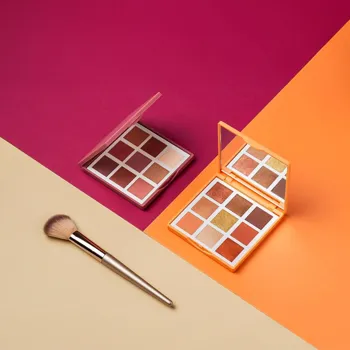
Cool undertones lean towards pink, red, or blue. And neutral undertones are a balance of both warm and cool.
Trick to determine undertone: check wrist veins & jewelry reaction
There's a simple trick to figuring out your undertone. Take a look at the veins on your wrist in natural light. If your veins appear blue or purple, you likely have cool undertones. If they appear green, you probably have warm undertones.
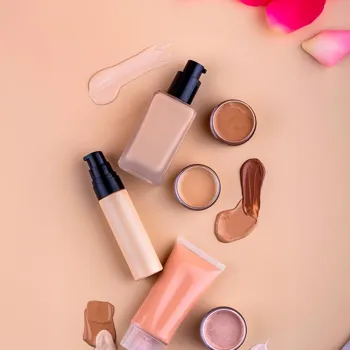
If you can't tell whether they're blue or green, you likely have neutral undertones. Another way is to see how your skin reacts to gold and silver jewelry. If gold looks better on your skin, you likely have warm undertones. If silver looks better, you probably have cool undertones.
It's okay if it feels confusing at first, but don't worry, with a little practice you'll get the hang of it. Knowing your undertone unlocks a whole new level of makeup understanding.
Choose concealer matching your undertone for seamless blend
Once you've identified your undertone, it's time to choose a concealer with a matching undertone. For warm undertones, look for concealers with yellow or golden hues. For cool undertones, opt for concealers with pink or peach hues. And for neutral undertones, you're in luck!
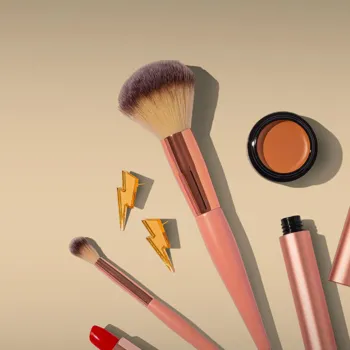
You can usually get away with concealers that have either warm or cool undertones. Finding a concealer that complements your undertone will ensure that it blends seamlessly with your skin and provides natural-looking coverage. Remember, we want to enhance your natural beauty, not mask it!
Different concealers excel at various tasks, such as brightening under-eye area
Why are you using concealer? Are you aiming to brighten your under-eye area, cover blemishes, or even out skin tone? Different concealers excel at different tasks. Each type of concealer comes in different sizes and textures which can be useful for different purposes.
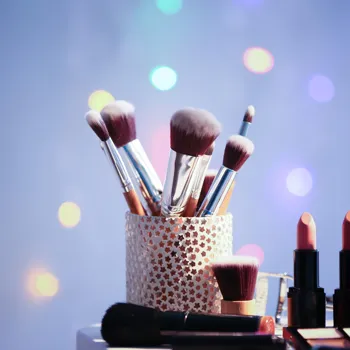
Brightening concealers are typically lighter in shade and have a radiant finish, perfect for illuminating the under-eye area and making you look more awake. They often contain light-reflecting particles that bounce light away from dark circles.
Thicker, matte concealer for blemishes & skin tone evening
For blemishes, you'll want a concealer with a thicker consistency and a matte finish. This type of concealer will provide more coverage and stay in place longer, preventing blemishes from peeking through. Look for concealers that are non-comedogenic, meaning they won't clog your pores.
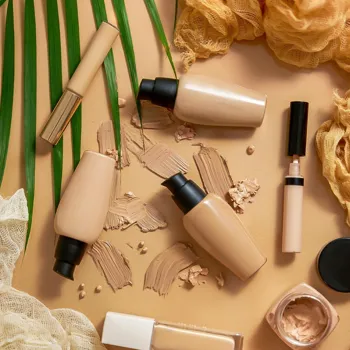
And for evening out skin tone, a concealer that matches your skin tone exactly is ideal. You can use it to cover areas of redness or discoloration, creating a more uniform complexion.
Choose the right concealer for optimal makeup results
Consider the specific area you're targeting. Applying a thick, matte concealer under your eyes can make the area look dry and cakey, while using a light, brightening concealer on a stubborn blemish might not provide enough coverage.
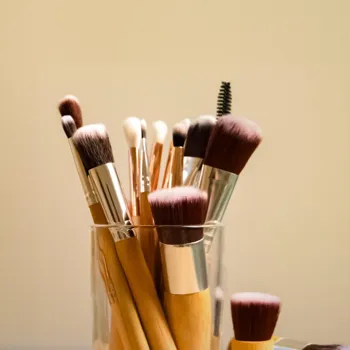
Understanding the purpose of your concealer will help you choose the right shade and formula for optimal results. It's like having the right tool for the job! Using right tools makes you look better and makes makeup easier.
Choose lighter concealer for under-eye circles, avoid makeup too early
For the under-eye area, it's generally recommended to choose a concealer that's one or two shades lighter than your skin tone. This will help to brighten the area and counteract any dark circles or shadows. Under eye circles are a common makeup issue that can be resolved with concealers.
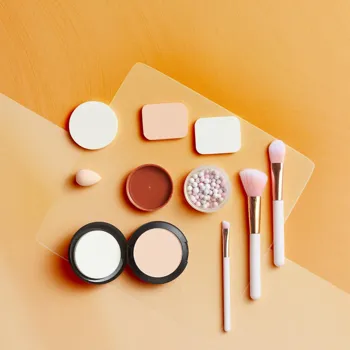
However, it is important to know when to start wearing them. In case makeup is started early it could cause dark circles.
Choose correct concealer shades to brighten dark circles
However, be careful not to go too light, as this can create an unnatural, ashy look. Stick to one or two shades lighter for a subtle brightening effect. Also, consider the color of your dark circles.

If you have bluish or purplish dark circles, opt for a concealer with peach or orange undertones to help neutralize the discoloration. If your dark circles are more brownish, choose a concealer with yellow or golden undertones. Remember our undertone guide from earlier?
Choose hydrating, creamy under-eye concealer to avoid settling in lines
The texture of your under-eye concealer is also important. You'll want something creamy and hydrating that won't settle into fine lines or wrinkles. Avoid thick, heavy concealers, as they can accentuate wrinkles and make you look older.
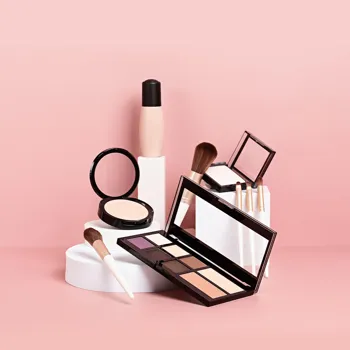
Instead, look for lightweight formulas that glide on smoothly and blend easily. A little bit of this concealer goes along way and it should be applied with care.
Choose concealer matching skin tone to hide blemishes effectively
When it comes to covering blemishes, the goal is to conceal them seamlessly without drawing attention to them. So, you'll want to choose a concealer that matches your skin tone exactly.

Avoid using a concealer that's lighter than your skin tone, as this will only highlight the blemish and make it more noticeable.
Testing concealer on skin tones for a perfect match
Finding a perfect match can be easier said than done, especially as our skin tones can fluctuate throughout the year. The best strategy is to test the concealer on the area around the blemish and see how well it blends. If it disappears into your skin, you've found a winner!
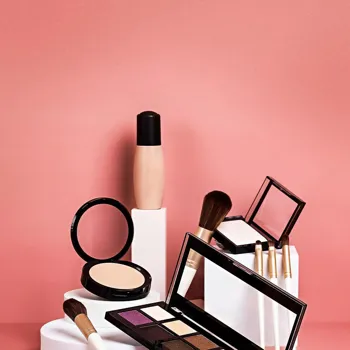
If it looks too light or too dark, try a different shade. Its texture should be thick enough as blemishes have their ups and downs.
Concealer with good coverage for acne-prone skin
A concealer with good coverage will definitely help with the issue. The formula is also crucial. You'll want a concealer that is non-comedogenic. This means it will not clog pores.
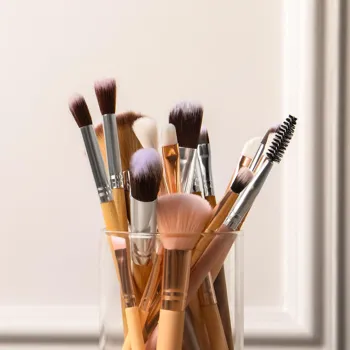
Also, look for concealers that are specifically formulated for acne-prone skin, as they often contain ingredients that can help to soothe and heal blemishes. A good concealer should have more benefits than just covering the blemish.
Test concealer in natural light for accurate color matching
This is a super important rule for all makeup, but especially for concealer! Artificial lighting in stores can be very deceiving, making it difficult to accurately assess the true color of the concealer. Always try to test the concealer in natural light before making a purchase.
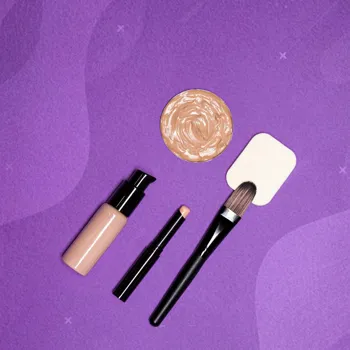
Step outside or near a window and apply a small amount of concealer to your jawline or the area you want to conceal.
Finding the perfect makeup shade is key for a flawless look
See how it looks in the natural light. Does it blend seamlessly with your skin? Does it brighten your under-eye area without looking ashy? Does it effectively cover your blemishes without being noticeable? If the answer to all these questions is yes, then you've found a winner!
If not, keep searching. Do not worry because finding the right shade can be tiring.
Natural light crucial for accurate makeup shades
Remember, what looks good in the store's artificial lighting may look completely different in natural light. So, don't skip this crucial step! It can save you from buying a concealer that doesn't match your skin tone and ending up with a costly mistake.
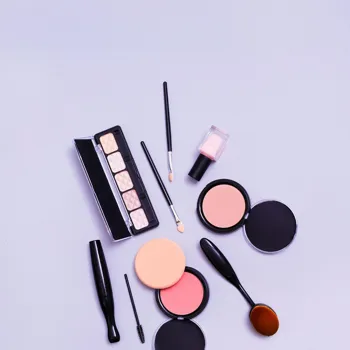
The sunlight gives an accurate view on how it actually looks. Lighting is very important to check a makeup finish.
Adjust concealer shade based on season for best match
Just like your foundation shade might change depending on the time of year, so too might your concealer shade. During the summer months, your skin tends to get darker due to sun exposure. Therefore, you might need to go a shade or two darker with your concealer.
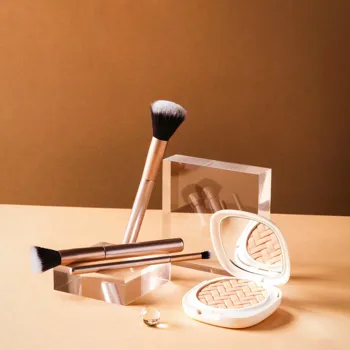
And during the winter months, when your skin is lighter, you might need to switch to a lighter shade.
Vary concealer shades by season for adaptable makeup
Keep in mind that you might need different concealer shades for different seasons. It's a good idea to have a few different shades on hand so you can adjust your makeup accordingly. This is especially important if you live in an area with distinct seasons.
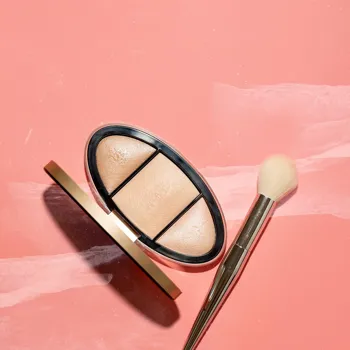
This is a makeup tip that would help you year round.
Weather affects skin; adjust makeup for dry/wet seasons
Another thing to consider is that your skin might become drier in the winter months. In this case, you might want to switch to a more hydrating concealer formula to prevent your skin from looking dry and cakey.
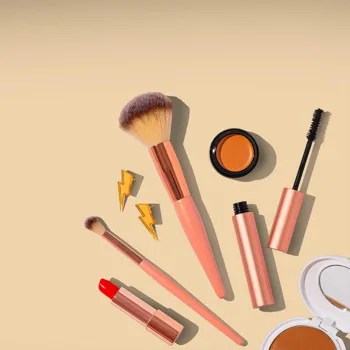
And in the summer months, you might want to opt for a lighter, more oil-free formula to prevent your makeup from melting off in the heat. The weather has an impact on ones skin.
Blend two concealer shades for a custom match
Sometimes, despite all your best efforts, you might not be able to find the perfect concealer shade. In that case, don't be afraid to mix two different shades together to create a custom blend that matches your skin tone perfectly!
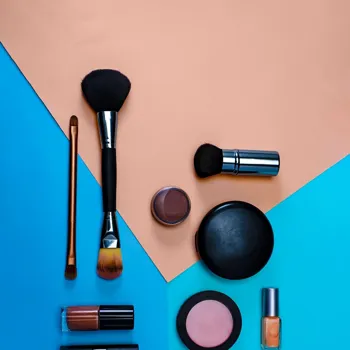
It's like being a makeup artist and creating your own personal shade.
Blend two concealers for a perfect match
This is especially helpful if you have a hard-to-match skin tone or if your skin tone changes frequently. Start by mixing a small amount of each concealer on the back of your hand. Then, use a makeup brush or your finger to blend the two shades together until you achieve your desired color.
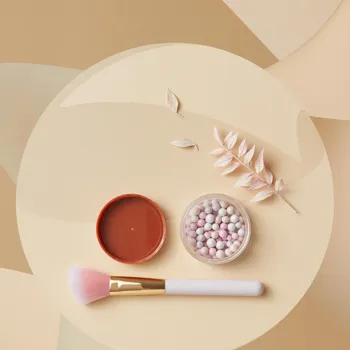
Test the mixture on your jawline or the area you want to conceal to make sure it's a good match.
Mixing concealers for custom texture and coverage
Mixing concealers can also be a great way to customize the texture of your concealer. For example, if you have dry skin, you can mix a hydrating concealer with a more matte concealer to create a formula that provides both coverage and hydration. Practice to master this technique.
